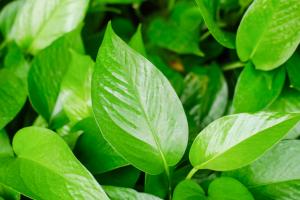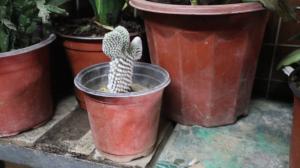Introduction
Black walnut trees are known for their natural herbicide properties, which makes it challenging to grow plants near them. They secrete a chemical called juglone that is toxic to many plants. However, certain plants are still suitable candidates for growing near black walnut trees. In this article, we will discuss the plants that can be grown next to black walnut trees.
Plants to Grow Next to Black Walnut Trees
Although it may seem impossible to grow anything near a black walnut tree, certain plants are juglone-tolerant, and they can survive and thrive well. Here are some plants that can be grown next to black walnut trees:
Hostas: Hostas are shade-loving plants that grow well under the canopy of a black walnut tree. They have large, lush leaves that provide a great contrast to the dark bark of the tree.
Daylilies: Daylilies are another juglone-tolerant plant that can be grown near black walnut trees. They provide a pop of color with their bright, trumpet-shaped flowers.
Ferns: Ferns are perfect for growing near black walnut trees as they thrive in shaded areas. They have delicate leaves that add a touch of elegance to any landscape design.
Astilbes: Astilbes are shade-loving plants that produce beautiful, plumed flowers of pink, red, or white. They can add a touch of color to any garden or landscaping design.
Wildflowers: Certain wildflowers are juglone-tolerant and can grow near black walnut trees. Some of these include wild geraniums, columbine, and Virginia bluebells.
Plants to Avoid Near Black Walnut Trees
Now that you know which plants can be grown near black walnut trees, here are some plants that should be avoided:
Tomatoes: Tomatoes are extremely sensitive to juglone and should not be planted near black walnut trees.
Peppers: Peppers are also sensitive to juglone and should be avoided.
Apples and pears: Trees such as apple and pear are also sensitive to juglone and should be planted as far away from black walnut trees as possible.
Lilacs: Lilacs are also sensitive to juglone and should be avoided.
Hydrangeas: Hydrangeas are sensitive to juglone and should not be planted near black walnut trees.
Conclusion
Growing plants near black walnut trees can be challenging, but it is still possible. By selecting the right plants and avoiding those that are sensitive to juglone, you can still create a beautiful landscape design. Hostas, daylilies, ferns, astilbes, and wildflowers are great options for planting near black walnut trees. However, tomatoes, peppers, apples, pears, lilacs, and hydrangeas should be avoided. With proper planning and care, you can transform your garden and create a beautiful outdoor space that complements your black walnut trees.

 how many times do yo...
how many times do yo... how many planted tre...
how many planted tre... how many pine trees ...
how many pine trees ... how many pecan trees...
how many pecan trees... how many plants comp...
how many plants comp... how many plants can ...
how many plants can ... how many plants and ...
how many plants and ... how many pepper plan...
how many pepper plan...































